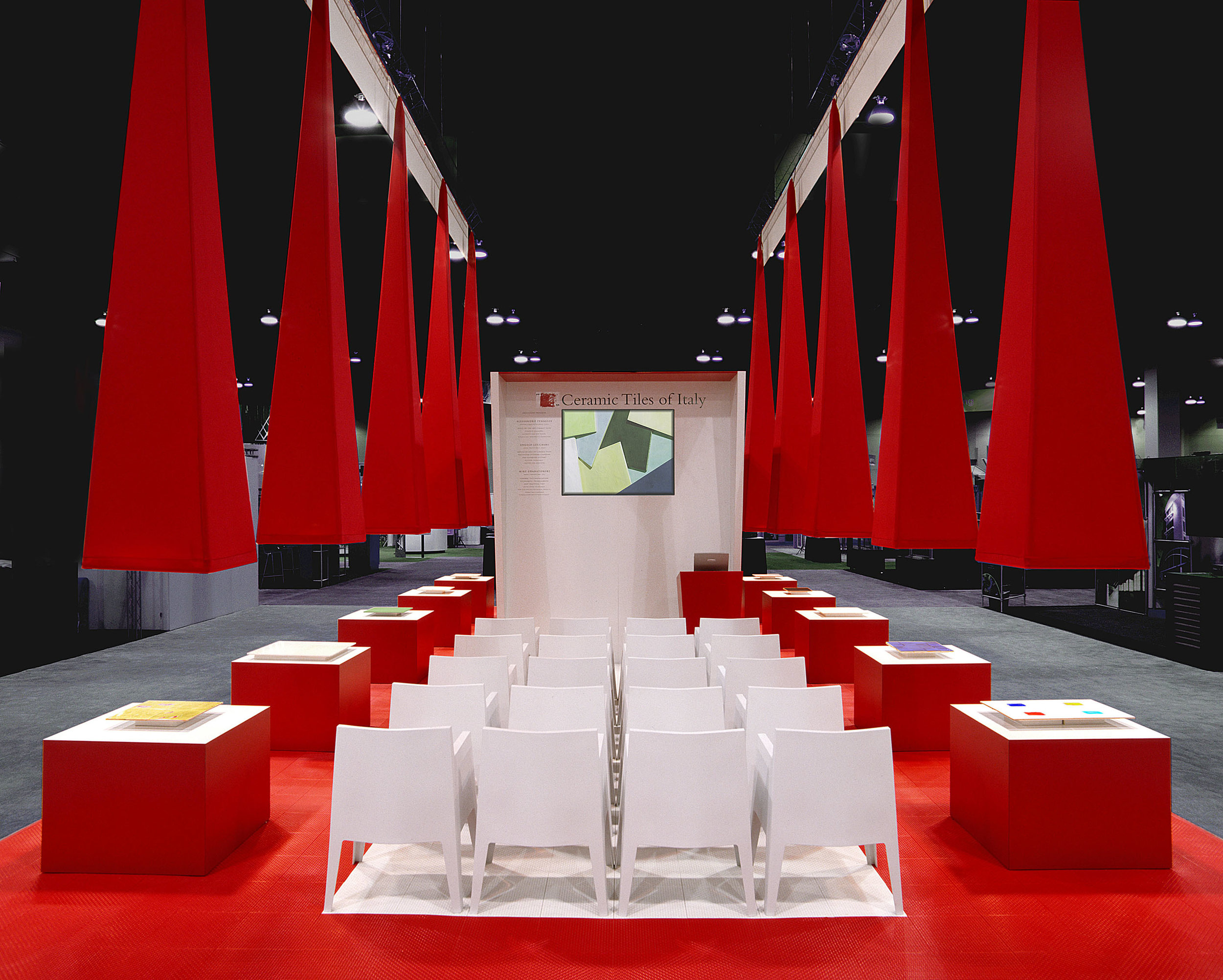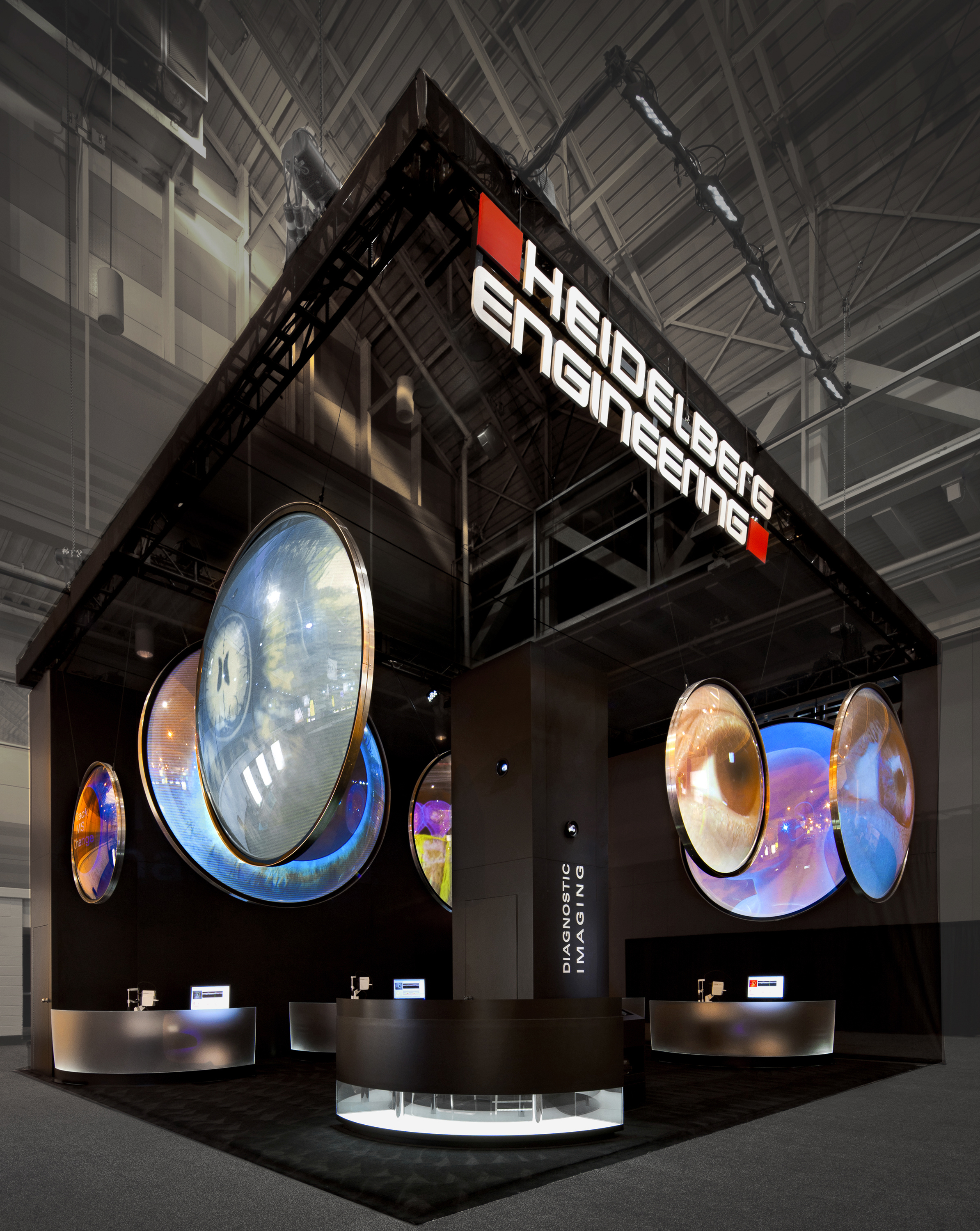In the course of creating exhibition design, the hotel ballroom venue poses unique challenges. Just like a trade show hall but with carpet, right? Not really.
The expectations of the client are usually to create an exhibit that is just like the trade show exhibit on the floor of the convention center hall. While there are some similarities, it’s a really different space in which to communicate a message.
A site survey is the place to start. This is critical because unlike standard trade show floor spaces, every ballroom is different. There is almost always overly designed carpet, elaborate wall detailing, low ceiling height, columns and chandeliers.
Hotel carpet can overshadow your message.
Most hotels have fairly complete CAD documents, but double check critical dimensions so you have a firm idea of the space. Pay attention to chandeliers that descend below the average room height. Nothing worse than setting up a 13’ tower in a 14’ room, only to discover an immovable chandelier that descends to 12’. I’ve found that these rooms always look taller than they actually are, so measure twice.
Carpet in ballrooms is designed to stand out in a massive room, and the aggressive pattern can be really distracting in a smaller space. At minimum, plan to carpet your space so that your exhibit can stand out against the ballroom carpeting. A neutral carpet works best unless you have a flooring that ties into the exhibit concept like a printed beach carpet for a sunscreen product.
If you have any control of the hall lighting, turning off the chandeliers and ambient lighting reduces the forced “fanciness” of the environment. This will require you to bring your own lighting, but it can also allow your exhibit to really stand out against the competition using the existing hall lighting.
Setup access can be another problematic issue. Unlike convention center exhibition halls, hotels are primarily setup for people, not properties. The path to bring in exhibit properties can be lengthy. I recently did an exhibit that required using a single loading dock (which we had to share), two small elevators and a long convoluted path to bring in our exhibits. This added to substantially to labor costs.
Keeping fire exits accessible is critical in laying out any space, but especially in a ballroom. Talk to the fire marshall about the preferred exits before you start designing. You may find out they might require fewer doors than are available. For design purposes, I always assume that every exit needs to be left open. Fire sprinklers also need to be left unobstructed. This will limit or eliminate covered exhibit spaces such as conference rooms.
There can also be lower limits to utilities in the ballrooms. Wifi speeds, and electrical capacity are generally much lower than on a convention hall floor. One advantage of ballrooms is that wifi dependent live demonstrations sometimes work better because they don’t need to compete with the anarchy of wifi signals in a convention hall. The hotels’ event coordinator will be your best source for this kind of information.
In the end, the great thing about doing a large exhibit in a dedicated hotel ballroom is that you have total control of the space. You don’t have to compete for attention with your competitors, which allows for a clear and focused message.
Good luck, and I look forward to your comments.
Mitchell Mauk










